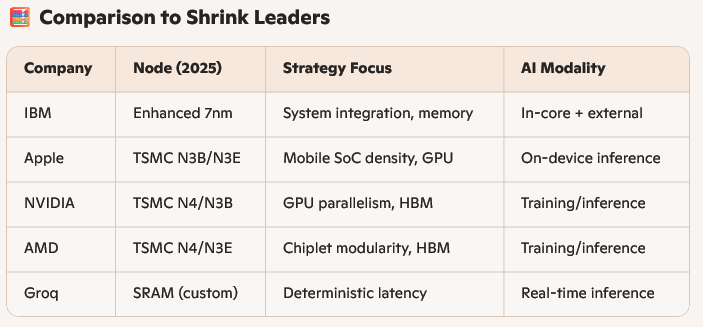Yes—IBM appears strategically comfortable operating a node or two behind the leading-edge shrink curve, prioritizing system-level performance, memory bandwidth, and AI integration over raw transistor density.
Here’s how that plays out in their current roadmap:
IBM’s Node Strategy: Enhanced 7nm, Not 5nm
- Power11 CPU (2025): Built on Samsung’s enhanced 7nm node, not 5nm or 3nm like Apple, AMD, or NVIDIA.
- Why? IBM cited client preference for speed over density, choosing higher clock rates and memory bandwidth rather than chasing smaller geometries.
- Packaging Focus: Power11 uses 2.5D stacking with Samsung’s iCube SI interposer, enabling high-speed memory and AI acceleration without needing a leading-edge node.
Architectural Priorities Over Shrink
- Matrix Math Acceleration: In-core MMA engines for AI inference
- Spyre AI Attachments: External ASICs for scalable AI workloads
- OMI Memory Architecture: Up to 32 DDR5 ports per socket, yielding 4× bandwidth vs prior gen
- Quantum-Safe Security: Embedded in z-series mainframes, prepping for post-quantum threats
IBM’s philosophy is system-centric, not chip-centric. They optimize for reliability, scalability, and integration across hybrid cloud and regulated enterprise environments.
 |





